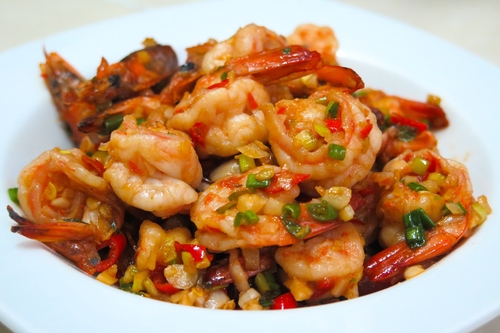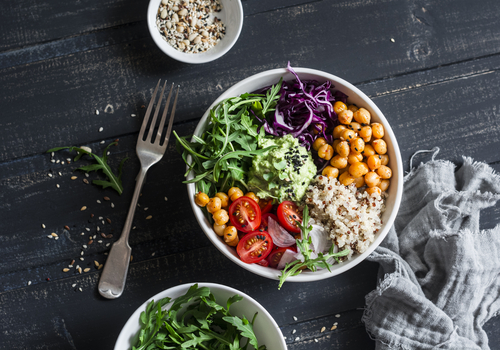Leaky gut, also known as increased intestinal permeability, is a digestive condition in which bacteria and toxins are able to "leak" through the intestinal wall.
"Leaky gut" is a popular topic in the health and wellness world these days. It's been suggested that it might be the cause of many symptoms and conditions that seem to be all-too-common. Allergies, intolerances, joint pain, bloating, digestive issues and even autoimmune diseases to name a few.
But what is leaky gut, and how can you tell if you have it? We’ll dig into the details below.
What is a leaky gut?
Simply put, your “gut” (a.k.a. “intestinal tract”) is a tube that makes up part of your digestive system. It’s not as simple as a hose or pipe; it’s an amazing tube made of live cells tightly bound together. Your gut helps your body absorb fluids and nutrients, digests your food, and houses billions of friendly gut microbes.
It's also selective to what it allows past its barrier. Your intestinal tract purposefully keeps some things from being absorbed, so they pass right on through to the other end to be eliminated as waste. You don't want to absorb many harmful microbes or toxins into your body, right?
FACT: About 70-80% of our immune system is housed around our gut, so it’s ready for foreign invaders.
Absorption of fluids and nutrients happens when they're allowed through this cellular tube into the circulation. And this is great! As long as what's being absorbed are fluids and nutrients. The blood and lymph then carry the nutrients to your liver, and then around to the rest of your body; this is so that all your cells, all the way to your toenails, get the nutrition they need to be healthy and grow.
How does a gut become “leaky?”
The gut can become leaky if the cells get damaged, or if the bonds that hold the cells together get damaged. Leaky gut can be caused or worsened by a number of diet and lifestyle factors. Dietary factors like too much sugar or alcohol or even eating things that you're intolerant to can all contribute to leaky gut.
Lifestyle factors like stress, lack of sleep, infections, and some medications can also be culprits in this area. Sometimes, if the balance of gut microbes inside the gut is thrown off, this can also contribute to a leaky gut.
Any contributing factors that alter the balance in your gut may cause our gut to become "permeable" or leak. At this point incompletely digested nutrients, microbes (infectious or friendly), toxins, or waste products can more easily get into our bodies.
Scientifically speaking, a “leaky gut” is known as “intestinal permeability.” This means that our intestines are permeable and allow things through that they normally would keep out. They “leak.” As you can imagine, this is not a good thing.
What are the symptoms of a leaky gut?
Because so much of your immune system is around your gut, the immune cells quickly recognize a “foreign invader” and start their response. This is normal and good if the gut is working properly and not allowing too many things to “leak” in.
But when that happens too much, and the immune system starts responding, the notorious inflammation starts. Once the immune system starts responding it can look like allergies, food intolerances, and even autoimmune diseases.
Because the first place affected is the gut, there are a number of symptoms right there. Things such as abdominal pain, bloating, gas, nausea, vomiting, heartburn, constipation or diarrhea. Not to mention that if foods, even healthy foods, aren't properly digested, their nutrients aren't properly absorbed. Poor absorption can lead to lack of essential vitamins and minerals for the optimal health of every cell in your body.
Some of the symptoms can also occur on the skin. Acne, dry skin, itchiness, rashes, eczema, and hives can all be symptoms related to leaky gut. Even rosacea and psoriasis can be linked here due to their autoimmune component.
It’s possible that even some neurological symptoms are linked with leaky gut. For example, brain fog, fatigue, headaches, inability to sleep, and general moodiness can also be related.
Finally, a number of chronic inflammatory diseases are thought to be linked with a leaky gut. Things like Crohn's, colitis, celiac disease, IBS, and MS. Even things like heart disease and stroke are possibilities.
What to eat for leaky gut
The general recommendation is to stop eating inflammatory foods and eat more gut-soothing foods.
Incorporating a gut-soothing diet means cutting out grains, legumes, and dairy. Add to that list, food additives, alcohol, and refined sugars.
In their place, add in more green leafy and cruciferous veggies. These are full of nutrients and contain fibre to help feed your friendly gut microbes. You also want to add more sources of vitamin D which can come from fish and egg yolks, and also from the sun. Eat more probiotic foods like sauerkraut, dairy-free yogurt, and kombucha (fermented tea). Make sure you're getting enough essential omega-3 fats found in seafood and seaweed. Finally, make sure you're getting some coconut oil and bone broth. Coconut oil has special fats called MCTs (medium-chain triglycerides), and bone broth has essential amino acids.
Conclusion
Leaky gut, or "intestinal permeability" can happen when your gut gets damaged due to too much sugar and alcohol, or eating foods you're intolerant to. It can also be from stress, lack of sleep, or imbalance in your friendly gut microbes. The symptoms of leaky gut are vast - spanning from digestive woes to skin conditions, even to autoimmune conditions.
It's important to cut out problem foods and drinks and add in more gut-soothing things like green leafy vegetables, cruciferous vegetables, and probiotic foods. It's also important to ensure you're getting enough omega-3 fats, vitamin D, and amino acids.
Recipe (gut soothing): Slow-Cooked Chicken Broth
Serves 6-8
1 whole chicken, cooked, bones with or without meat
3 carrots, chopped
2 celery, chopped
1 parsnip, chopped
1 onion, chopped
4 bay leaves
4 tbsp apple cider vinegar
Herbs and spices as desired: 1 bunch of parsley, 1 tablespoon or more of sea salt, 1 teaspoon peppercorns, additional herbs or spices to taste. I also add 2 cloves of garlic for the last 30 minutes of cooking.
2 handfuls spinach
Instructions
1 - Place chicken bones, and meat if using, into a slow cooker.
2 - Add chopped vegetables, vinegar, and herbs/spices.
3 - Cover with hot water (about 2 litres/8 cups).
4 - Cook 8 h on medium or overnight on low.
5 - Add spinach and garlic 30 minutes before serving.
Serve & enjoy!
Tip: You can strain it before serving, or serve it with the cooked vegetables as soup.
References:
https://www.thepaleomom.com/what-is-leaky-gut-and-how-can-it-cause/
https://www.thepaleomom.com/what-should-you-eat-to-heal-leaky-gut/
http://www.precisionnutrition.com/all-about-nutrition-gut-health
http://www.healthline.com/nutrition/is-leaky-gut-real#section3
https://www.dietvsdisease.org/leaky-gut-syndrome/
http://www.medscape.com/viewarticle/837168
http://www.medscape.com/viewarticle/531603























